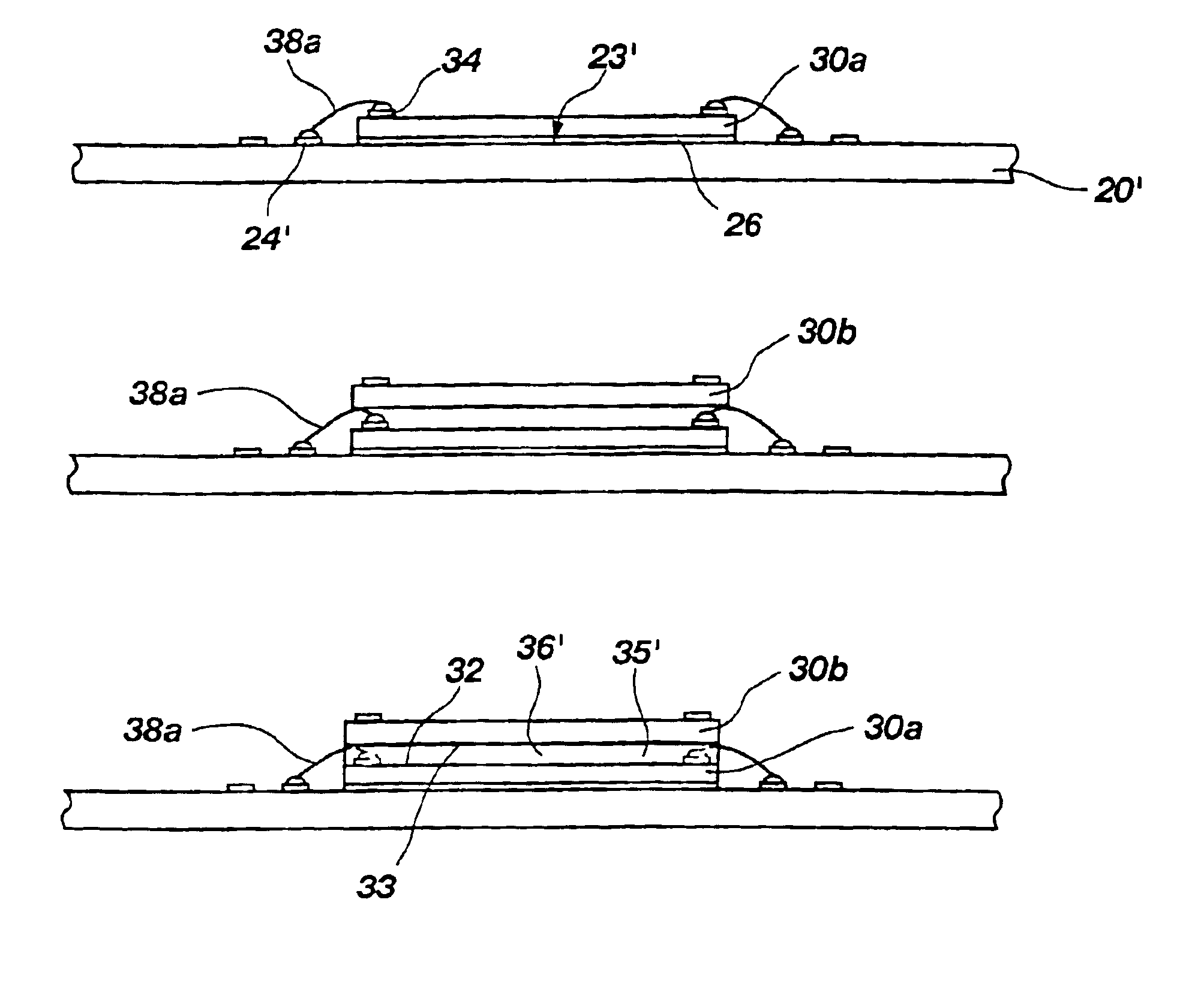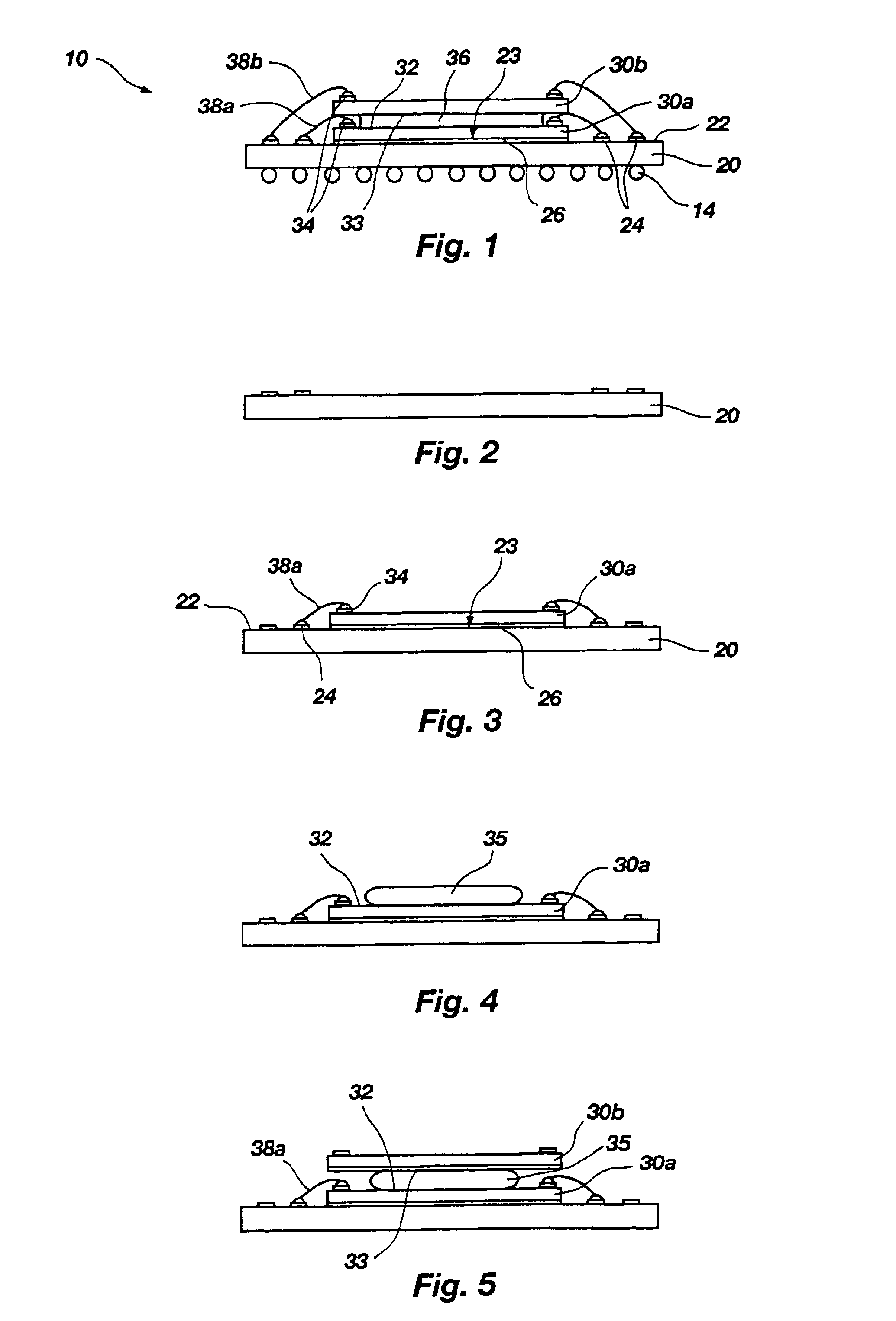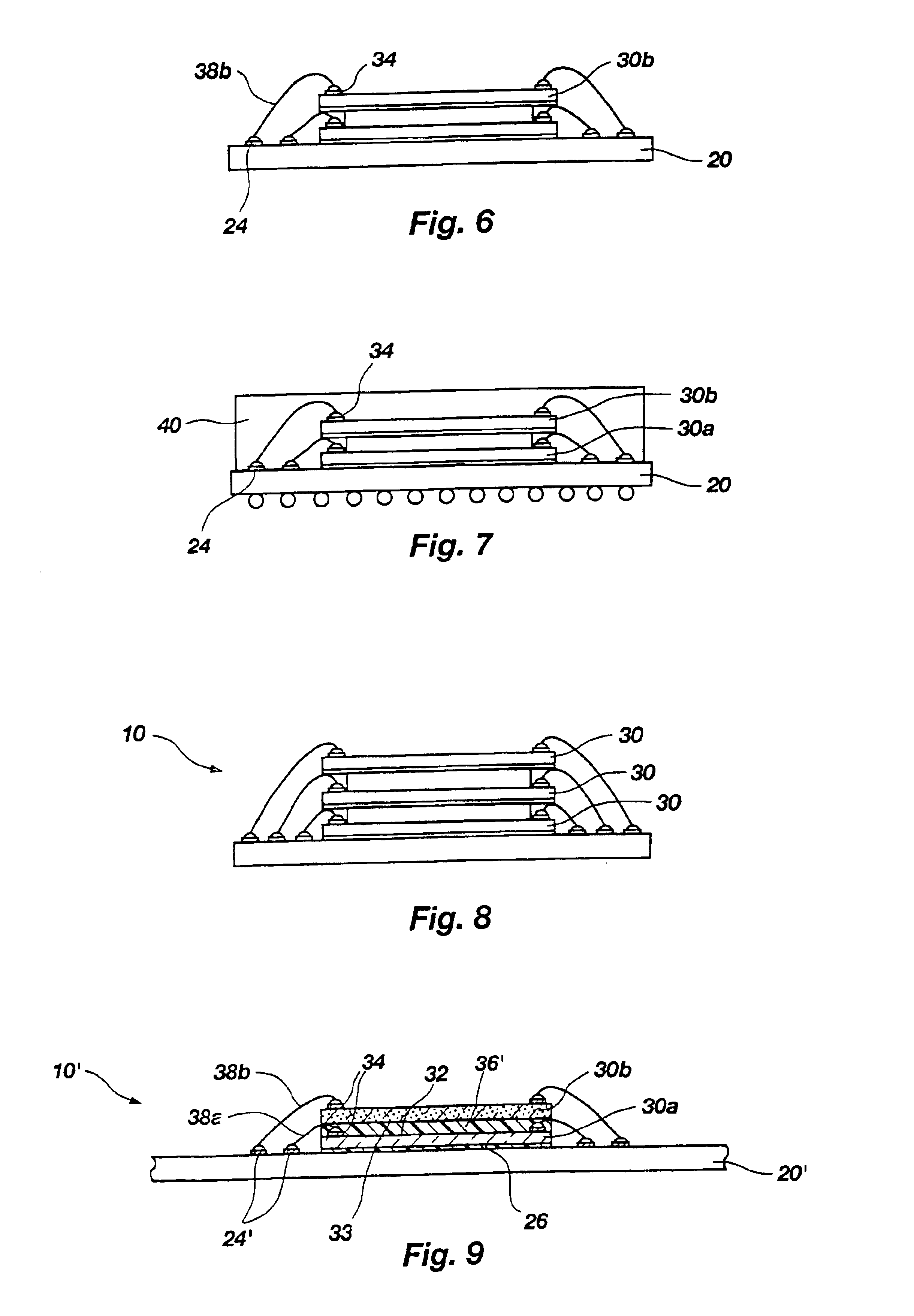Assemblies including stacked semiconductor devices separated a distance defined by adhesive material interposed therebetween, packages including the assemblies, and methods
a technology of adhesive materials and semiconductor devices, applied in the field of semiconductor device assemblies, can solve the problems of large amount of real estate, difficult to actually reduce the implementation of different types of functionality into a single semiconductor device, and large amount of space, so as to facilitate the introduction and spread of the effect of assembly and reducing the overall height of the assembly
- Summary
- Abstract
- Description
- Claims
- Application Information
AI Technical Summary
Benefits of technology
Problems solved by technology
Method used
Image
Examples
Embodiment Construction
With reference to FIG. 1, an exemplary embodiment of an assembly 10 incorporating teachings of the present invention is illustrated. As shown, assembly 10 includes a substrate 20 with two semiconductor devices 30a, 30b (collectively referred to as “semiconductor devices 30”) positioned thereover in stacked arrangement.
The depicted substrate 20 is an interposer with a number of bond pads, which are referred to herein as contact areas 24, through which electrical signals are input to or output from semiconductor devices 30 carried upon or adjacent to a surface 22 of substrate 20. Each contact area 24 corresponds to a bond pad 34 on an active surface 32 of one of the semiconductor devices 30 positioned upon substrate 20.
Of course, the use of other types of substrates, such as circuit boards, semiconductor devices, leads, and the like, in assemblies and assembly methods incorporating teachings of the present invention is also within the scope of the present invention. Accordingly, a sub...
PUM
 Login to View More
Login to View More Abstract
Description
Claims
Application Information
 Login to View More
Login to View More - R&D
- Intellectual Property
- Life Sciences
- Materials
- Tech Scout
- Unparalleled Data Quality
- Higher Quality Content
- 60% Fewer Hallucinations
Browse by: Latest US Patents, China's latest patents, Technical Efficacy Thesaurus, Application Domain, Technology Topic, Popular Technical Reports.
© 2025 PatSnap. All rights reserved.Legal|Privacy policy|Modern Slavery Act Transparency Statement|Sitemap|About US| Contact US: help@patsnap.com



